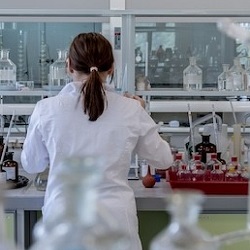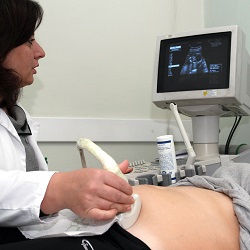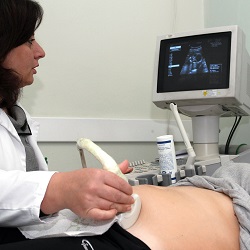Disturbi del comportamento alimentare in gravidanza e loro conseguenze sul benessere materno fetale

I Disturbi del Comportamento Alimentare (DCA) da molti anni costituiscono una vera e propria epidemia sociale per milioni di giovani nel mondo.
Anoressia Nervosa (AN), Bulimia Nervosa (BN), Disturbo da Alimentazione Incontrollata (DAI) sono delle gravi patologie che si stanno diffondendo per la presenza simultanea di diversi fattori che agiscono su ragazzi e ragazze già fortemente a rischio (stile di vita sedentario, stimoli ripetuti al consumo di alimenti, contesto culturale fortemente influenzato dall’industria della dieta e della moda, predisposizione genetica, ecc.). I DCA vengono classificati come malattie mentali, dunque di conseguenza rientrano nell’area di competenza della psicopatologia, della psichiatria e della psicoterapia. Anche per questo, richiedono interventi coordinati di specialisti diversi, soprattutto in certe fasi. Ad accumunare AN, BN e DAI ci sono un’eccessiva importanza attribuita all’alimentazione, al peso, alle forme corporee e al loro controllo. L’AN è caratterizzata da: rifiuto di mangiare, mantenere il peso corporeo al di sopra o al peso minimo normale per l’età e la statura, paura di acquistare peso, alterazione della percezione del peso e della forma corporea, amenorrea nelle donne, ecc. La BN è invece caratterizzata da: ricorrenti abbuffate, condotte compensatorie inappropriate per prevenire l’aumento di peso, livelli di autostima molto bassi. Anche il DAI è caratterizzato da abbuffate compulsive, ma in questo caso non si osservano strategie compensatorie, anzi è strettamente legato all’obesità. La diagnosi di questi disturbi è molto complessa, e lo è ancor di più consapevolizzare la persona affetta del problema che la coinvolge.
La gravidanza e il post partum sono dei momenti di grandi cambiamenti per la donna, che vive importanti modificazioni anatomiche, funzionali e psicologiche. È stato sottolineato il possibile disagio reattivo alle modificazioni che avvengono a livello corporeo. Quanto più sono veloci ed intensi i cambiamenti somatici, tanto più gli stessi sono considerabili fattori di vulnerabilità nel processo di elaborazione dell’immagine corporea. L’aumento di peso e l’alterazione dell’immagine corporea potrebbero ulteriormente aggravare DCA pregressi, oppure favorire l’insorgenza di nuovi, come avviene per esempio nella pregoressia. I periodi più critici che con maggior probabilità possono presentare una riacutizzazione della sintomatologia sono il primo trimestre e il puerperio. Nelle donne con DCA il desiderio di perdere il peso preso durante la gravidanza è molto più forte e accentuato, e questo porta loro a riprendere i vecchi comportamenti disfunzionali che messi in atto in questo delicato periodo di vita risultano nocivi non solo per sé stesse ma anche per il neonato in quanto influenzano le scelte per il nutrimento del bambino.
pubblicità
I DCA in gravidanza possono avere ripercussioni sia sulla madre (iperemesi gravidica, bisogno di parto cesareo, ipertensione, aborti spontanei, parti prematuri) che sul bambino (basso peso alla nascita, basso indice Apgar, circonferenza della testa più piccola, aumentato rischio di microcefalia, anemia, nascita prematura e morte perinatale). Dopo la nascita i neonati di madri con AN presentano rischi più elevati di ipotermia, ipoglicemia, infezioni e morte perinatale rispetto ai bambini nati da madri in salute. Inoltre, l’epoca gestazionale in cui si verificano le carenze nutrizionali riveste un ruolo specifico per l’esito della gravidanza stessa. L’AN materna sembra ostacolare la crescita della prole, mentre la BN si associa ad una crescita eccessivamente rapida e ad un probabile sovrappeso nei figli. In particolare per i maschi sembra che il DCA nella madre determini una crescita ponderale eccessiva e molto rapida, mentre le figlie femmine presentano un rischio almeno raddoppiato di sviluppare a loro volta un DCA.
Relativamente alle conseguenze che la presenza di disturbi alimentari può avere sul rapporto con i figli, sono state riportate difficoltà nel seguire l’allattamento e poi l’alimentazione dei figli.
Emerge la necessità di parlare dei DCA, in particolar modo durante la gravidanza e nel post partum, anche perché chi ne soffre spesso non parla per vergogna e paura del giudizio altrui. I DCA sono disturbi ad elevata mortalità (10-20%), che possono determinare complicanze ostetriche, peri-natali e sulla crescita e sviluppo del bambino, nonché favorire lo sviluppo di DCA. È fondamentale sensibilizzare e consapevolizzare i familiari delle donne con DCA, e far sì che ricevano supporto e sostegno. Prima si interviene, maggiori sono le possibilità di raggiungere la guarigione.
Autori:A.M.De Santis (Biologa Nutrizionista), A.Lauletta(Medico Chirurgo,Specialista In Ostetricia e Ginecologia), C.Roselli(Tecnica Di Laboratorio)
Bibliografia
- American Psychiatric Association. DSM-V, Manuale Diagnostico e statistico dei disturbi mentali, 2014.
- Andersen A.E e Ryan G.L. Disturbi alimentari nella popolazione di pazienti ostetrici e ginecologici. In “Obstet Gynecol”, 2009. 114: p. 1353–1367.
- Bailey, C. A., Gibbons, S.J. Physical victimization and bulimic-like symptoms: is there a relationship. In “Deviant Behavior”, 1989. 10: p. 5-352.
- Bailey L.A. e Hailey B.J. The psychological experience of pregnancy. In “Intern J Psychiatry Med”, 1986-7. 16: p. 263-74.
- Baker C.W., Carter A.S., Cohen L.R. e Brownell K.D. Eating attitudes and behaviors in pregnancy and postpartum: global stability versus specific transitions. In “Soc Behav Med”, 1999. 21: p. 143-8.
- Balbo, M. “L’integrazione dell’EMDR nei disturbi da Binge Eating”. Documento presentato al primo Convegno Nazionale dell’EMDR a Bologna, 2004.
- Beck C. T. A meta-analysis of predictors of postpartum depression. In “Nursing Research”, 1996. 45: p. 297-303.
- Bennet H. A., Einarson A., Taddio A., Koren G., Einarson T. R. Prevalence of depression during pregnancy: a systematic review. In “Obstetrics Gynecology”, 2004. 03: p. 698-709.
- Blais M.A., Becker A.E., Burwell R.A., Flores A.T., Nussbaum K.M., Greenwood D.N., Ekeblad E.R. e Herzog D.B. Pregnancy: Outcome and impact on symptomatology in a cohort of eating-disordered women, In “Int. J. Eat. Disord.”, 2000. 27: p. 140–149.
- Bould H., Sovio U., Koupil I., Dalman C., Micali N., Lewis G., Magnusson C. Do eating disorders in parents predict eating disorders in children? Evidence from Swedish cohort. In “Acta Psychiatrica Scandinavica”, 2015. p. 1-9.
- Breese McCoy S. J. Postpartum depression: an essential overview for the practitioner. In “Southern Medical Journal”, 2015. 104: p. 128-32.
- Brinch M., Isager T. e Tolstrup K. Anorexia nervosa and motherhood: reproduction pattern and mothering behavior of 50 women. In “Acta Psychiatr Scand”, 1998. 77: p. 611-7.
- Bruce, B., Agras WS. Binge eating in females: a population-based investigation. In “International Journal of Eating Disorders”, 1992. 12: p. 365-374.
- Bulik C.M., Sullivan P.S., Fear J.L., Pickering A. e McCullin M. Fertilità e riproduzione nelle donne con anoressia nervosa: uno studio controllato. In “Journal of Clinical Psychiatry”, 1999. 60 (2): p. 135-137.
- Bulik C.M., e al. Patterns of remission, continuation and incidence of broadly defined eating disorders during early pregnancy in the Norwegian mother and child cohort study (MoBa). In “Psychol Med”, 2007. 37(08): p. 1109–18.
- Burton T, Hands B, Bulsara C. Metaphors used by women with eating disorders to describe their experience of being pregnant. In “Evidence Based Midwifery”, 2015. 13(4): p. 126–31.
- Carter A. S., Baker C. W., Brownell K. D. Body mass index, eating attitudes, and symptoms of depression and anxiety in pregnancy and the postpartum period. In “Psychosom attic Medicine”, 2000. 62: p. 264-70.
- Claydon E.A., Davidov D.M., Zullig K.J., Lilly C.L., Cottrell L. e Zerwas SC. Waking up every day in a body that is not yours: a qualitative research inquiry into the intersection between eating disorders and pregnancy, In “BMC Pregnancy Childbirth”, 2018. 18: p. 463.
- Coker E., Abraham S. Body weight dissatisfaction before, during and after pregnancy: a comparison of women with and without eating disorders. In “Eat Weight Disord.”, 2015. 20(1): p. 719.
- Cox J. L., Holden J. M., Sagovsky R. Detection of post- natal depression. Development of the 10-item Edinburgh Postnatal Depression Scale. In “British Journal of Psychiatry”, 1987. 150: p. 782-6.
- Cox, J. L., Murray D., Chapman, G. A controlled study of the onset, duration and prevalence of postnatal depression. In “British Journal of Psychiatry”, 1993. 163: p. 27-31.
- Crow S., Agras W. S., Crosby R., Halmi K., Mitchell J. E. Eating disorder symptoms in pregnancy: a prospective study. In “International Journal of Eating Disorders”, 2008. 41: p. 277-9.
- Crow S.J, e al. Eating disorder symptoms in pregnancy: a prospective study. In “Int J Eat Disord.”, 2008. 41(3): p. 277-9.
- Davies K. e Wardle J. Body image and dieting in pregnancy. In “J Psychosom Res”, 1994. 38: p. 787-99.
- Dei M. e Bruni V. Adolescenza e immagine corporea. In “Baldaro Verde J., Cersosimo L., Genazzani A.R., eds. Il consultorio familare. Contraccezione e desiderio di maternità”. Pisa: CIC Edizioni Internazionali, 1998: p. 23-8.
- Dinas K., Daniilidis A., Sikou K., Tantanasis T., Kasmas S., Tzafettas J. Anorexia nervosa in pregnancy: a case report and review of the literature. In “Obstetric Medicine”, 2008. 1: p. 97-8.
- Eik-Nes T. T, Horn J., Strohmaier S., Holmen T. L., Micali N., Bjørnelv S. Impact of eating disorders on obstetric outcomes in a large clinical sample: A comparison with the HUNT study. In “International Journal of Eating Disorders”, 2018. 51: p. 1134-1143.
- Evans J. e Le Grange D. Body size and parenting in eating disorders: a comparative study of the attitudes of mothers towards their children. In “Int J Eat Disord”, 1995. 18: p. 39-48.
- Favaro A., Tenconi E., Degortes D., Soave M., Zanetti T., Nardi M. T., Caregaro L., Santonastaso P. “Association between low height and eating disorders: cause or effect?”. In “International Journal of Eating Disorders”, 2007. 40: p. 549-553.
- Fairburn C.G. e Welch S.L. The impact of pregnancy on eating habits and attitudes to shape and weight. In “Int J Eat Disord”, 1990. 9: p. 153-60.
- Fairburn, C. Come vincere le abbuffate: un nuovo programma scientifico. In “Positive Press”, 1996, Verona.
- Fairburn C.G., Stein A. e Jones R. Eating habits and eating disorders during pregnancy. In “Psychosom Med”, 1992. 54: p. 665-72.
- Fairburn, C.G. et al. Risk factors for anorexia nervosa: three integrated case-control comparisons. In “Arch. Gen.Psychyatry”, 1999. 56: p. 468-476.
- Fairburn, C.G., Harrison P.J. Eating Disorders. In “Lancet”, 2003. 361: p. 407-416.
- Favaro A, Zanetti T, Huon G, et al. Engaging teachers in an eating disorder preventive intervention. In “Int J Eat Disord”, 2005. 38: p. 73-7.
- Fogarty Sarah, Rakime Elmir, Phillipa Hay e Virginia Schmied. The experience of women with an eating disorder in the perinatal period: a meta- ethnographic study. In “BMC Pregnancy and Childbirth”, 2018.
- Franko D. L., Walton B. E. Pregnancy and eating disorders: a review and clinical implications. In “International Journal of Eating Disorders”, 1993. 13(1): p. 41–8.
- Franko D. L., Blais M. A., Becker A. E., Selwyn Belinsky S., Greenwood D. N., Flores A. T., Ekeblad E. R., Eddy K. T., Herzog D. B. Pregnancy complications and neonatal outcomes in women with eating disorders. In “American Journal of Psychiatric”, 2001. 158: p. 1461-1466.
- Franko D.L. e Walton B.E. Pregnancy and eating disorders: a review and clinical implications. In “Int J Eat Disord”, 1993. 13: p. 41-7.
- Franko D.L., Blais M.A., Becker A.E., Delinsky S.S., Greenwood D.N., Flores A.T., e al. Pregnancy complications and neonatal outcomes in women with eating disorders. In “Am J Psychiatry”, 2001. 158: p. 1461-6.
- Garfinkel, P.E., Garner, D.M. Anorexia nervosa. A multidimensional perspective. New York: In “Brunner-Mazel Pubblishers”, 1982.
- Garner, D.M., Dalle Grave, R. Terapia cognitivo comportamentale dei disturbi dell’alimentazione. In “Positive Press”, 1999, Verona.
- Griez E. J., Hauzer R., Meijer J. Pregnancy and estrogen- induced panic. In “American Journal of Psychiatry”, 1995. 152: p. 1688.
- Henshaw C., Foreman D., Cox J.). Postnatal blues: a risk factor for postnatal depression. In “Journal of Psychosomatic Obstetrics & Gynecology”, 2004. 25: p. 267-72.
- Ho E. Anorexia nervosa in pregnancy. In “Nurs Mirror”, 1985. 160: p. 40-2.
- Honjo S., Arai S., Kaneko H., Ujiie T., Murase S., Sechiyama H. Antenatal depression and maternal-fetal attachment. In “Psychopatology”, 2003. 36: p. 304-11.
- Hollifield J., e Hobdy J., The course of pregnancy complicated by bulimia. In “Psychother Theory Res Pract Train”, 1990. 27(2): p. 249–55.
- Jablensky A. V., Morgan V., Zubrick S. R., Bower C., Yellachich L. Pregnancy, delivery, and neonatal com- plications in a population cohort of women with schizophrenia and major affective disorders. In “American Journal of Psychiatry”, 2005. 162: p. 79-91.
- Jenkin W. e Tiggemann M. Psychological effects of weight retained after pregnancy. In “Women Health”, 1997. 25: p. 89-98.
- Kersting A. Peripartum depression and grief after pregnancy loss: special problem areas in obstetrics. In “Nervenarzt", 2012. 83: p. 1434-41.
- Koubaa S, Hällström T, Lindholm C e Hirschberg AL. Pregnancy and neonatal outcomes in women with eating disorders. In “Obstet Gynecol”, 2005. 105: p. 255-60.
- Koubaa S., Hällström T., Hirschberg A.L. Early maternal adjustment in women with eating disorders. In “Int J Eat Disord”, 2008. 41: p. 405–10.
- Kouba S., Hällström T., Lindholm C., Linden Hirschberg A. Pregnancy and neonatal outcomes in women with eating disorders. In “Obstetrics Gynecology”, 2005. 105(2): p. 255-260.
- Koubaa S., Hällström T., Hirschberg A. L. Early maternal adjustment in women with eating disorders. In “International Journal of Eating Disorders”, 2008. 41: p. 405–10.
- Lacey J.H., Smith G. Bulimia Nervosa. The impact of pregnancy on mother and baby. In “Br J Psychiatry”, 1987. 150: p. 777-81.
- Liberto T. L. Screening for depression and help-seeking in post- partum women during well-baby pediatric visits: an integrated review. In “Journal of Pediatric Health Care”, 2012. 26: p. 109-17.
- Linna M. S., Raevuori A., Haukka J., Suvisaari J. M., Suokas J. T., Gissler M.). Pregnancy, obstetric, and perinatal health outcomes in eating disorders. In “American Journal of Obstetrics Gynecology”, 2014. 392: p. 1-8.
- Liotti, G. L’anoressia mentale e la dimensione cognitivo-interpersonale dei disturbi psicogeni dell’alimentazione. In “Psicobiettivo”, 1988, Roma, Cedis. 2: p. 25-34.
- Manzato E., Zanetti T., Gualandi M. Pregnancy in severe anorexia nervosa. In “International Journal of Eating Disorders”, 2009. 42: p. 84-86.
- Marcus S. M. Depression during pregnancy: rates, risks and consequences. In “Canadian Journal of Clinical Pharmacology”, 2009. 16: p. 15-22.
- Marino M., Battaglia E., Massimino M., Aguglia E. Fattori di rischio nella depressione post partum. In “Rivista di Psichiatria”, 2012. 47: p. 187-94.
- Mazzeo S. E. Associations among postpartum depression, eating disorders, and perfectionism in a population-based sample of adult women. In “International Journal of Eating Disorders”, 2006. 39(3): p. 202-11.
- Mazzeo S. E., Bulik C. M. Environmental and genetic risk factors for eating disorders: What the clinician needs to know. In “Child and Adolescent Psychiatric Clinics of North America”, 2009. 18(1): p. 67-82.
- Meltzer-Brody S., Howard L. M., Bergink V., Vogod S., Jones I., Munk-Olsen T., Honikman S., Milgrom J. Postpartum psychiatric disorders. In “Nature Reiwes Disease Primers”, 2018. 4: p. 18-22.
- Micali N., Treasure J. e Simonoff E. Eating disorders symptoms in pregnancy: a longitudinal study of women with recent and past eating disorders and obesity. In “J Psychosom Res”, 2007. 63: p. 297-303.
- Milgrom J., Martin P. R., Negri L. M. Depressione postnatale: ricerca, prevenzione e strategie di intervento psicologico. In “Erickson”, 2003, Trento.
- Mitchell A. M., Bulik C. M. Eating disorders and women’s health: an update. In “Journal of Midwifery Womens Health”, 2006. 51: p. 193-201.
- Morgan J.F., Lacey J.H., Sedgwick P.M. Impact of pregnancy on bulimia nervosa. In “Br J Psychiatry”, 1999. 174: p. 135-40.
- O’Hara M. W., Swain A. M. Rates and risk of postpartum depression: a meta-analysis. In “International Review of Psychiatry”, 1996. 8: p. 37-54.
- Patel P e al. Concerns about body shape and weight in the postpartum period and their relation to women's self-identification. In “J Reprod Infant Psychol”, 2005. 23(4): p. 347–64.
- Piszczatowska E. H., Krajewska-Kulak E. Pregorexia - Anorexia of pregnant women. In “Med Pediatr Gen”, 2017. 13 (3): p. 363-367.
- Popovic M., Pizzi C., Rusconi F., Gagliardi L., Galassi C., Trevisan M., Merletti F., Richiardi L. The role of maternal anorexia nervosa and bulimia nervosa before and during pregnancy in early childhood wheezing: Findings from the NINFEA birth cohort study. In “International Journal of Eating Disorders”, 2018. 51(8): p. 842-851.
- Ramchandani D. e Whedon B. The effect of pregnancy on bulimia. In “Int J Eat Disord”, 1998. 7: p. 845-8.
- Rand C.S.W., Willis D.C. e Kuldau J.M. Pregnancy after Anorexia Nervosa. In “Int J Eat Disord”, 1987. 6: p. 671-4.
- Rota Stabelli Marlene, https://www.clinicasanmartino.it/blog/i-disturbi-del-comportamento-alimentare-in-gravidanza-e-nel-post-partum/
- Russel, G.F.M. La bulimia rivista. In “Psicobiettivo”, 1988. 2: p. 57-67. Roma, Cedis.
- Schulz L. The Dutch hunger winter and developmental origins of health and disease. In “Proceedings of the National Academy of Sciences”, 2010. 107: p. 16757-16758.
- Shaffer SE, Hunter LP e Anderson G. The experiences of pregnancy for women with a history of anorexia or bulimia nervosa. In “Canadian Journal of Midwifery Research and Practice”, 2008. 7: p. 17-30.
- Spitzer R., Devlin, M., Walsh Bt. Binge eating disorder: a multisite field trial of the diagnostic criteria. In “International Journal of Eating Disorders”, 1992. 11: p. 191-203.
- Steiner M., Dunn E., Born L. Hormones and mood: from menarche to menopause and beyond. In “Journal of Affective Disorders”, 2003. 74: p. 67-83.
- Stapleton, H. Women with eating disorders: a study of their perceptions of childbearing and maternity services. In “International Nursing Link-Up”, 2001. 7(20): p. 7-71.
- Stevens-Simon C., Nakashima I. e Andrews D. Weight gain attitudes among pregnant adolescents. In “Soc Adol Med”, 1993. 14: p. 369-72.
- Stewart D. E., McDonald O. L. Hyperemesis gravidarum, eating disorders and pregnancy. Abraham D. editor. In “Proceedings of the Second International Conference of Eating Disorders”, 1986. Sydney, Australia: Second International Conference on Eating Disorders.
- Stewart D. E., Raskin J., Garnkel P. E., MacDonald O. L., Robinson G. E. Anorexia nervosa, bulimia and pregnancy. In “American Journal of obstetrics and Gynecology”, 1987. 157: p. 1194-8.
- Swann R. A., Von Holle A., Torgersen L., Gendall K., Reichborn-Kjennerud T., Bulik C. M. Attitudes toward weight gain during pregnancy: Results from the Norwegian mother and child cohort study (MoBa). In “International Journal of Eating Disorders”, 2009. 42(5): p. 394-401.
- Strang V.R. e Sullivan P.F. Body image attitudes during pregnancy and the postpartum period. In “J Obstet Gynecol Neonatal Nurs”, 1985. 14: p. 332-7.
- Suzuki K e Takeda A. Comparative study of marriage, pregnancy, delivery, and childcare between Japanese women with and those without eating disorders. In “Jpn J Psychosome Med”, 2013. 53: p. 660–669.
- Tierney S., McGlone C., Furber C. What can qualitative studies tell us about the experiences of women who are pregnant that have an eating disorder?”. In “Midwifery”, 2013. 29(5): p. 542–9.
- Tierney S. Treading the tightrope between motherhood and an eating disorder: a qualitative study. In “International Journal of Nursing Studies”, 2011. 48(10): p. 1223-33.
- Tierney S. e al. Treading the tightrope between motherhood and an eating disorder: a qualitative study”. In “Int J Nurs Stud”, 2011. 48(10): p. 1223-33.
- Triunfo S., Lanzone A. Impact of maternal under nutrition on obstetric outcomes. In “Journal of Endocrinological Investigation”, 2015. 38: p. 31-8.
- Vesga-López O., Blanco C., Keyes K., Olfson M., Grant B. F., Hasin D. F. Psychiatric disorders in pregnant and postpartum women in the United States. In “Archives of General Psychiatry”, 2008. 65: p. 805-15.
- Walker L.O. Weight related distress in the early months after childbirth. In “West J Nursing Res”, 1998. 20: p. 30-44.
- Ward V.B. Eating disorders in pregnancy, In “BMJ”, 2008. 336: p. 93-6.
- Watson H.J., Zerwas S., Torgersen L., Gustavson K., Diemer E. W., Knudsen G. P., Reichborn-Kjennerud T., Bulik C. M. Maternal eating disorders and perinatal outcomes: A three-generation study in the Norwegian Mother and Child Cohort Study. In “Journal of Abnormal Psychology”, 2017. 126: p. 552-564.
- Waugh E., Bulik C. M. Offspring of women with eating disorders. In “International Journal of Eating Disorders”, 1999. 25: p. 123-133.
- Weinfeld R.H., Dubay M., Burchell R.C., Millerick J.D. e Kennedy A.T. Pregnancy associated with anorexia and starvation. In “Am J Obstet Gynecol”, 1977. 15: p. 698-9.
- Wisner K. L., Sit D. K., McShea M. C., Rizzo D. M., Zoretich R. A., Hughes C. L., Hanusa B. H. Onset timing, thoughts of self-harm, and diagnoses in postpartum women with screen-positive depression findings. In “JAMA Psychiatry”, 2013. 70(5): p. 490-8.
- Woodside D.B. e Shekter-Wolfson L.F. Parenting by patients with Anorexia Nervosa and Bulimia Nervosa. In “Int J Eat Disord”, 1990. 9: p. 303-9.
I Correlati
Arriva il test genetico SoReal in grado di individuare la predisposizione alla vulvodinia e identificare precocemente il disturbo
Il Polygenic Risk Score come nuovo strumento per la diagnosi precoce di una condizione che affligge fino al 18% delle donne
Mesi estivi, i migliori per chi cerca una gravidanza
La vitamina D influisce sulla qualità degli ovociti, l’aumento della melanina regolarizza il ciclo mestruale, i ritmi più rilassati migliorano l’intimità
Insufficienza ovarica, gravidanza possibile con le nuove tecniche
Con 'Ascot' per il ringiovanimento ovarico il 7% di successi
Dall'Eshre nuove possibilità per le donne con insufficienza ovarica precoce
Lo studio IVI approfondisce la tecnica ASCOT per il ringiovamento ovarico, con una versione in 4 fasi che costituisce il trampolino per progettare trattamenti più efficaci e personalizzati per le pazienti con riserve ovariche compromesse
Ti potrebbero interessare
Arriva il test genetico SoReal in grado di individuare la predisposizione alla vulvodinia e identificare precocemente il disturbo
Il Polygenic Risk Score come nuovo strumento per la diagnosi precoce di una condizione che affligge fino al 18% delle donne
Mesi estivi, i migliori per chi cerca una gravidanza
La vitamina D influisce sulla qualità degli ovociti, l’aumento della melanina regolarizza il ciclo mestruale, i ritmi più rilassati migliorano l’intimità
Insufficienza ovarica, gravidanza possibile con le nuove tecniche
Con 'Ascot' per il ringiovanimento ovarico il 7% di successi
Dall'Eshre nuove possibilità per le donne con insufficienza ovarica precoce
Lo studio IVI approfondisce la tecnica ASCOT per il ringiovamento ovarico, con una versione in 4 fasi che costituisce il trampolino per progettare trattamenti più efficaci e personalizzati per le pazienti con riserve ovariche compromesse







Commenti